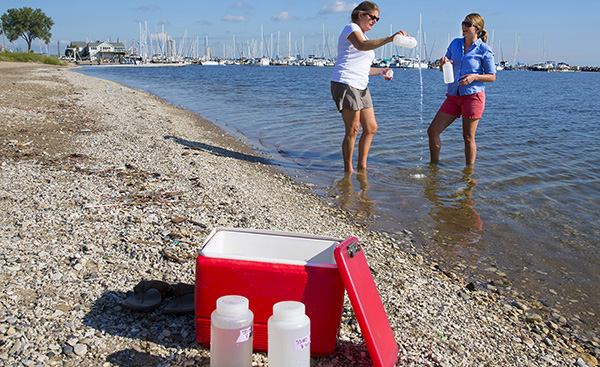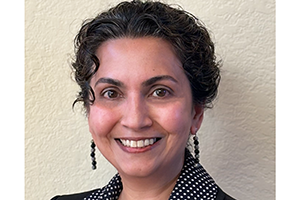
Milwaukeeans love their waterfront, but all too often a day at the beach becomes a risky activity when advisories are issued because of elevated bacteria levels.
That’s especially true at Milwaukee’s South Shore Beach, where water samples failed to meet the Environmental Protection Agency’s safety standards 42 percent of the time last year, making it among the nation’s 17 worst “repeat offender” beaches, according to a recent report by the Natural Resources Defense Council.
But there’s hope for South Shore Beach, where a partnership among UWM’s School of Freshwater Sciences, Milwaukee County and MillerCoors is addressing the problem.
MillerCoors, which previously helped restore Bradford Beach, recently announced it is investing $500,000 to redevelop South Shore Beach, based in part on recommendations and data from Sandra McLellan, a professor of freshwater sciences.
“We can do all this research, but it’s not going to fix the problem,” says McLellan, an environmental toxicologist whose lab uses DNA techniques to pinpoint the source of water pollutants. “There still needs to be some financial investment to implement changes,and this is the second time MillerCoors has stepped up to help.”
Water is a critical component of MillerCoors’ beers, notes Tami Garrison, the company’s community commerce and partnerships manager. “That’s why we greatly value the work that Sandra McLellan and her team are doing at the School of Freshwater Sciences. Her research will ensure that MillerCoors and the surrounding community have continued access to this vital resource for years to come.”
These sorts of partnerships are nothing new for McLellan. Since 2001, she has teamed up with local and state officials and environmental groups to find out why Milwaukee’s beaches were so frequently plagued with poor water quality. Her findings were key to the restoration of Bradford Beach, where water quality improved after officials added measures to absorb storm water runoff and reduce gull droppings.
“South Shore Beach is even more challenging than Bradford Beach,” McLellan says. “It has a marina, so it’s enclosed by a break wall and has less water circulation. There’s a lot of activity there, and because of the large parking lot, the waste washes right into the water. We have to look at that whole area and think about a master plan.”
Beaches are commonly tested for E. coli and enterococci, bacteria that are indicators of pathogen-bearing fecal pollution that can make swimmers sick. But McLellan’s lab is one of the few that examines all bacteria in water samples. That provides a much more complete picture and important insights into where pollutants are coming from, she says.
“What we can really offer the region is this higher tier of information for decision making,” she says.
Another role of McLellan’s lab will be to continue monitoring the beach.
“As they make improvements, we’re going to be able to document how water quality is getting better,” she says. “It’s not just for good for South Shore Beach; it’s really good for all the degraded beaches around the Great Lakes because they’re all facing similar issues.”







